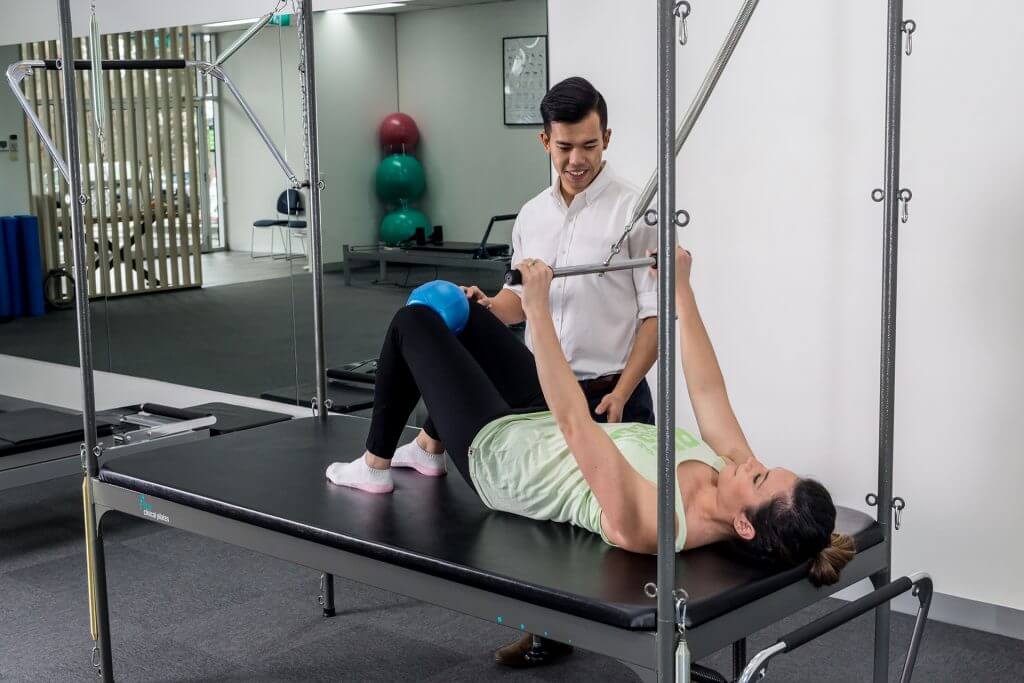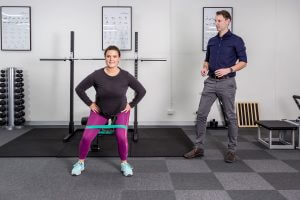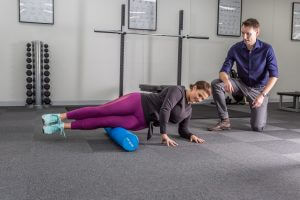Pilates + Physio: The top 5 reasons Physiotherapists use Pilates informed exercises to treat pain. Part 4
Recently in Australia, The Dept. of Health decided that only trained Physiotherapists may offer Pilates informed exercises as part of their treatment, in order for it to continue to be claimable under new health insurance reform.
We get that this may be confusing, and as leading providers of Physiotherapy and Clinical Pilates services our goal is to help make the reform as clear as possible for you.
So what is the big deal and why do Physiotherapists prescribe Pilates informed exercises anyway?
5 Reasons your Physiotherapist may recommend Pilates informed exercises –
1. Help recover from back pain fully
Imagine if you performed an exercise which acted like panadol and actually made you feel better afterwards! Well, that’s what we look for when prescribing clinical pilates-based exercises whilst recovering from back pain.
When your back pain is bad, moving is the last thing you feel like doing. Not only because it hurts, but it’s stiff and it’s tight and often seems all locked up. However it’s crucial that your performing at least one exercise while in this state to get moving again, to help loosen up the joints and muscles in your back, and to get rid of your pain. Physiotherapists are trained at prescribing the right exercise that will unlock your back during this crucial period of healing.
2. Get your core muscles firing
Research indicates that when suffering from back pain the core muscles in your trunk may actually start to switch off, leaving you stiff and more vulnerable to further injury.
A number of clinical pilates-based exercises reactivate and strengthen these muscles to protect from further injury. Not only that, but like any good exercise regime we can progressively increase the load on your core muscles so that they get stronger and allow you to do more, with less pain.
3. Help rehab an old injury
Not only can your core muscles become weak and inactive following back pain, but after any injury our bodies can develop compensatory movement patterns which, in the early stages help protect the injured body part (think about the way you limp after rolling your ankle, which serves to take pressure off your leg). Whilst this may be important in the very acute stages, prolonged compensatory movement patterns limit your overall recovery, and can make you more susceptible to re-injury.
Pilates informed exercises used as part of a complete physiotherapy treatment can help restore normal movement and prevent the compensatory patterns from becoming ingrained. It may even help with longer-term compensatory movement patterns and long-standing, chronic pain.
4. Help enhance pelvic floor function during, and after pregnancy
Hopefully by now were all aware of the massive impact pregnancy can have on a woman’s body. Pelvic floor health is a vital component to recovering from pregnancy fully, not only to reduce pelvic girdle and low back pain, but to minimise incontinence.
Specialty trained physiotherapists can prescribe exercises to activate your pelvic floor muscles more effectively and efficiently, and incorporate this into exercises for the rest of your body too. Think of it as a safe and non-impact way to reintroduce your joints, ligaments, tendons and muscles to exercise following pregnancy.
5. Prepare the body for impact exercise following an injury
Exercise is awesome! Exercise that leaves you feeling the burn is even better. When the endorphins flow, the physical and mental health benefits are enormous.
One of the biggest concerns our clients have when recovering from injury, is whether or not they’ll be able to get back to their favourite, impact exercise that gives them that burning feeling, or will it just cause their pain to re-aggravate?
When recovering from injury, the body responds best to graded, progressive exercise, starting from a safe baseline. In other words, start with something slow, controlled and light, with good form, before getting into the heavier, faster, more unpredictable, high impact style of exercise like burpees, squat jumps, sled pushes and sprints.
Pilates informed exercises are great, not only because they’re prescribed by a trained physio who understands how injuries happen and knows how to prevent them. But also because they’re easily graded to the stage of your injury recovery, with a focus on slow, controlled good form.
So get your form right first, perform slow, controlled movements to strengthen those crucial, protective core muscles, and get your body battle ready to take on your favourite high impact, exercise to Feel the burn.
If you have any further questions about how the new changes to private health insurance may affect you, please feel free to contact our friendly staff on 9752 2368.
If you’d like to book an appointment, call us or BOOK ONLINE HERE.




